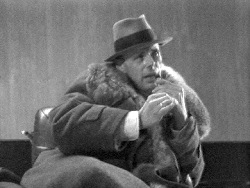Joseph Beuys
Biography
Joseph Beuys remains one of the major, influential figures in postwar German and European Art. As an artist, teacher, curator and activist Beuys holds a central position in the acceptance and appreciation of performance and conceptual art. His theories on the social utility of art influenced a generation of artists.
Beuys' work took the form of sculptural objects, drawings, installations, performance "actions" and lectures. In 1963 he began to make performances and concerts as part of Fluxus. In 1972 Beuys was dramatically dismissed from his post at the Kunstacademie in Dusseldorf for accepting students who had been officially refused admission. By the time of his first visit to the United States in 1974, Beuys had already been recognized internationally for the protests following his dismissal. Beuys used his first American tour to promote his plans for a new model of art institution, which found form later that year with the operation for one hundred days of the International Free University in Dusseldorf.
This unique collection of video material charts Beuys' developing relationship with an American audience, from the time of his long-awaited first tour of 1974 through to the 1980s.
Joseph Beuys was born in 1921, in Krefeld, Germany, and died in 1986. After military service and time as a prisoner of war, Beuys studied sculpture at the Kunstacademie in Dusseldorf. He served as Professor there from 1961 until 1972. Beuys' numerous international one-person shows include a major retrospective at the Solomon R. Guggenheim Museum, New York; Tate Gallery, London; Rene Block Gallery, New York. His work was featured in Documentas III-VII, Kassel, Germany, and at the 1976 and 1978 Venice Biennales. Major holdings of Beuys' work are in the collections of The Hessiches Landesmuseum, Darmstadt, Germany; the Städtisches Museum Abteiberg Mönchengladbach, and the Stedelijk Van Abbemuseum, Eindhoven, The Netherlands.
